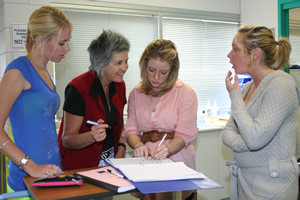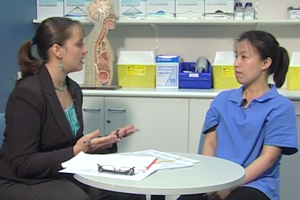Feedback for Learning
We all need feedback in order to improve. Consequently giving and receiving feedback on performance is an essential part of learning in the clinical workplace. From the supervisor’s perspective, providing students with feedback means letting them know, in a timely and ongoing way, how they are performing. From the student’s perspective, receiving feedback on performance gives them the opportunity to judge more clearly how they are performing against expectations, improve areas of weakness and/or strengthen good performance. Feedback should encourage self-reflection, raise self-awareness and help students plan for future learning and practice (Vickery & Lake 2005). However, to achieve best outcomes, students need to be open to feedback and proactive in using the feedback they receive to improve performance.
Remember, no-one is perfect - we all make mistakes and we all benefit from constructive feedback on our performance. Embracing continual learning through regular feedback on performance is a key component of professional and personal development.
There are several frameworks that provide direction on the provision of feedback. In the clinical education environment, Pendleton’s model is a well known framework that is aimed at assisting people to maximize their potential at different stages of training, raise their awareness of strengths and areas for improvement, and identify actions to be taken to improve performance. Also read our Hints and Tips Sheets for more on providing effective feedback and receiving feedback effectively
Providing effective feedback: Hints and tips
- Be timely. Give feedback soon after an event and as regularly as possible. Waiting for a few days, or the end of a rotation, is too late. Wherever possible, don’t give feedback at times when you or the student are tired or emotionally charged.
- Be specific. Students need the specifics, rather than a global “your performance isn’t meeting expectations”.
- Focus on the act or behaviour - not the person.
- Respond to cues. Respond to verbal, non-verbal cues - clarify, paraphrase, summarise, empathise and/or use silence as appropriate.
- Be constructive. Help provide solutions for areas of weakness. The positive critique, which looks at “what can be improved” rather than “what is wrong”, encourages looking for solutions.
- Choose an appropriate location. Positive feedback is effective when highlighted in the presence of peers or patients. Constructive criticism should be given in private - an office or some neutral territory where you are undisturbed is ideal. Phones should be off the hook, mobiles and pagers turned off.
- Encourage input from the person receiving feedback. People receiving feedback should be given the chance to comment on the fairness of the feedback and to provide explanations.
- Try to catch people doing things right. This can not only provide perspective and balance to your feedback but also motivate improved performance.
Receiving feedback effectively: Hints and tips
- Active listening. Be prepared to hear feedback which may indicate areas of your practice that are in need of improvement, and help suggest solutions for areas of weakness. Don’t simply respond by defending your own views.
- Asking for clarification Pause and think before responding. Ask for clarification and examples if statements are unclear or unsupported. Ask for the feedback to be repeated if you didn’t hear it clearly.
- Providing input. Consider the feedback being given and be prepared to provide explanations, constructive comment and/or further information on the issues raised.
- Being clear about solutions. Clarify your understanding of what has been discussed, the plan of action to achieve improvement and how the outcomes will be assessed.
- Accepting feedback in a constructive manner. Using feedback on performance for continuous improvement is a hallmark of professional practice.
|
Pendleton’s rules for giving feedback
Pendleton, D., Scofield, T., Tate, P. & Havelock, P. (1984). The Consultation: an approach to learning and teaching. Oxford University Press, Oxford. |
Watch these Videos to hear from staff and students on being assessed and receiving feedback on performance in the clinical setting.

Students and Staff
How will you know you are getting
on OK on prac?

Students and Staff
Asking your workplace supervisor
for feedback







